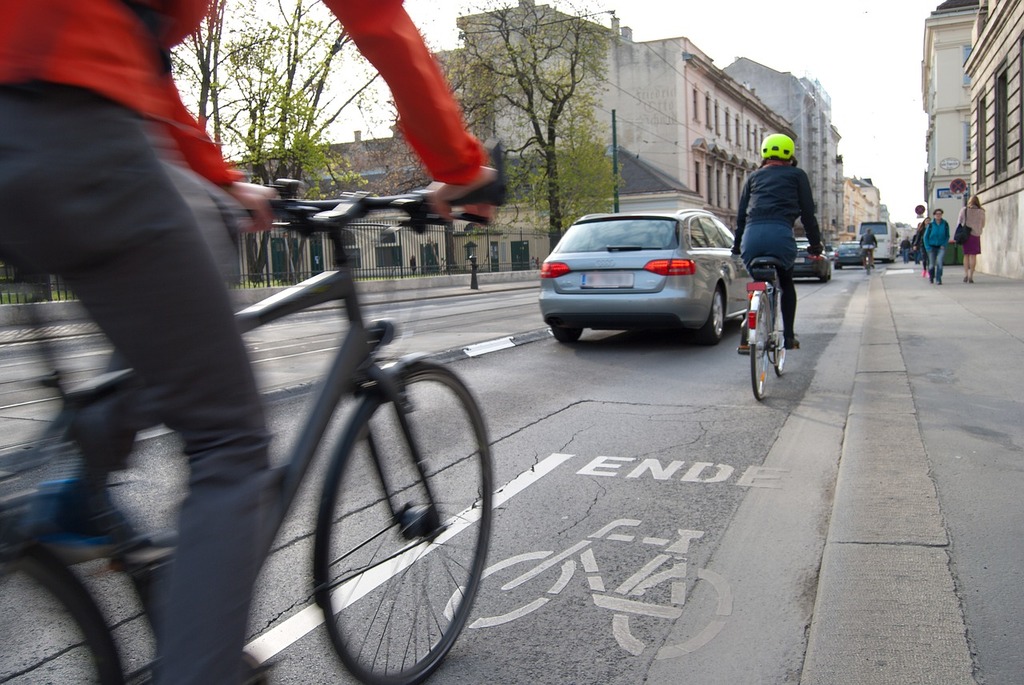Traffic violence has left a huge mark on our society. Globally, over one million people die on the roads, and tens of millions more get injured each year. The causes are well-known, and so are the possible solutions — though some are more heavily-discussed than others.
One of the less-discussed strategies to combat the carnage is vehicle-to-everything technology, or V2X. The principle of V2X communication is very simple: ten times a second, cars send out invisible radio signals that broadcast the vehicle’s size, current position, speed and direction. Other V2X-enabled cars receive these messages and foresee risky situations, enabling them to send their drivers a warning to avoid a crash (or someday, as automated driving improves, take control of the car and prevent the crash automatically). And these messages can be sent without a direct line of sight, even in harsh weather, with a much better range than any other sensor installed on vehicles today — all while using authentication keys that are changed every few minutes to prevent tracking and protect privacy.
Because V2X connects vehicles to everything, though, this technology can do much more than just protect drivers. Like a digital seatbelt for the 21st century, V2X-enabled bikes can provide critical protection for their riders by prompting V2X cars to display a warning right in front of the driver when a cyclist is about to cross their path. V2X technology can also be installed on roadsides, at intersections, on urban maintenance trucks, and on micromobility fleets. Existing or newly installed cameras and sensors can detect the location of vulnerable road users who aren’t using V2X, and the roadside V2X unit can broadcast that information to drivers, too. It can even record crashes and near-misses.
Best of all, all that anonymized data can then be recorded and aggregated, after which it can be shared with cities to help plan new bike and pedestrian infrastructure, or with navigation apps to give vulnerable road users more data on which routes safe.
Of course, none of this technology replaces the need for separated bike lanes — and no cyclist should be blamed for a crash simply because they don’t have a V2X enabled bike that can “talk” to a V2X enabled driver. But we also see that many cities around the world are investing too slowly and too little in building bike infrastructure, or simply painting sharrows on the road, with highly debatable benefits.
As cities catch up on infrastructure, even a very low level of V2X penetration can give city leaders the detailed data they need on traffic flow, traffic patterns, and even near-miss incidents. That’s particularly important for vulnerable road users, about whom cities are particularly lacking in data, according to the latest transport statistics report from the federal Department of Transportation. Even scooter and bike injuries sometimes go unreported when no motorists are involved in a crash; riders just turn up at the hospital and no one files a report. V2X provides better data that eliminates the need for riders to self-report crashes, instantly leaving a digital footprint of critical incidents.
Some U.S. cities already have some experience with V2X. Denver uses the technology to give signal priority to snowplows; Utah is currently in the process of equipping all signalized intersections with V2X. Several U.S. car manufacturers are also rumored to be releasing V2X-enabled models in the coming years.
Of course, V2X alone can’t solve America’s safety problems — and it will be at least two years before the first mass-produced electric bikes with V2X will hit the stores. When that happens, though, it may be worth trying something new — particularly if your city’s old safety approaches just aren’t working.
Editor's note: Opinion submissions do not necessarily reflect the views of Streetsblog USA.






